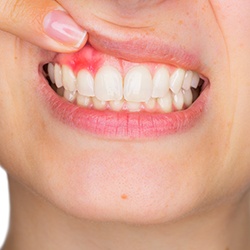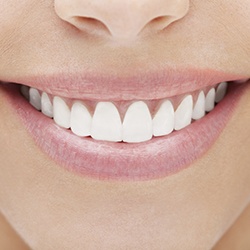Periodontal (Gum) Disease Therapy in Lisle
 If someone asked you, “What is the most prevalent disease in the US?” What would you say? Many people think it’s heart disease, cancer, or some other systemic illness. It’s actually something most people don’t know much about – periodontal disease.
If someone asked you, “What is the most prevalent disease in the US?” What would you say? Many people think it’s heart disease, cancer, or some other systemic illness. It’s actually something most people don’t know much about – periodontal disease.
The word periodontal is a combination of two Greek words. Perio means around and odont means tooth. It’s better known simply as gum disease. By any name, the disease is extremely prevalent among adults in the United States. Some research indicates that about half of adults over the age of 30 have some form of the disease, and that number increase significantly to about 80% after the age of 35. A disease affecting this many people deserves our attention, and we screen for periodontal disease at every dental checkup. For those patients who already suffer from gum disease, we also provide a number of periodontal therapies to renew oral health. If you’re looking for help with periodontal disease in the Lisle area, we invite you to contact Arbor Dental Care to schedule a treatment consultation today.
What is Gum Disease?

This common oral health condition occurs when bacteria, plaque, and tartar at the gum line irritates and even destroys the supportive gum and bone tissues around teeth. When this occurs, the resultant effects are minimal at first, but without treatment, the disease can lead to shifting teeth, chronic bad breath, or tooth loss. There are two forms of gum disease. The mild type is often referred to as gingivitis, and its symptoms can be easily overlooked by the untrained eye. They include things like mild bleeding during teeth cleaning, receding gum tissue, and bad breath. As the disease progresses into the more advanced form, periodontitis, the side effects are significantly more pronounced, and they include the following:
- Severe gum and supportive bone tissue recession
- Teeth that move or feel loose
- A bite that doesn’t fit together naturally
- Chronic, severe bad breath
- Inflamed, swollen, infected, or bleeding gums
- Unexplained tooth loss
How to Treat Gum Disease

This condition can lead to numerous, severe oral and overall health concerns, so it’s essential that any patient with gum disease seek out periodontal therapy right away. Without treatment, gum disease profoundly impacts oral health, and recent research has indicated a close connection between gum disease and chronic, systemic illnesses like diabetes, heart disease, and Alzheimer’s. The sooner we begin treatment, the more likely we’ll be able to restore complete oral health with minimally invasive solutions. In the earliest stages, improved at-home hygiene and more frequent professional cleanings may be effective in treating gum disease. In the advanced stages, treatments may include the following:
- Scaling – careful removal of bacteria, plaque, and tartar
- Root planing – the smoothing of roots to prevent future plaque and tartar buildup
- Antibiotic therapy – we may use antibiotics to reduce or limit the amount of oral bacteria
- Laser treatment – is the preferred method of performing most periodontal therapies as it is more comfortable and reduces healing time following treatment


